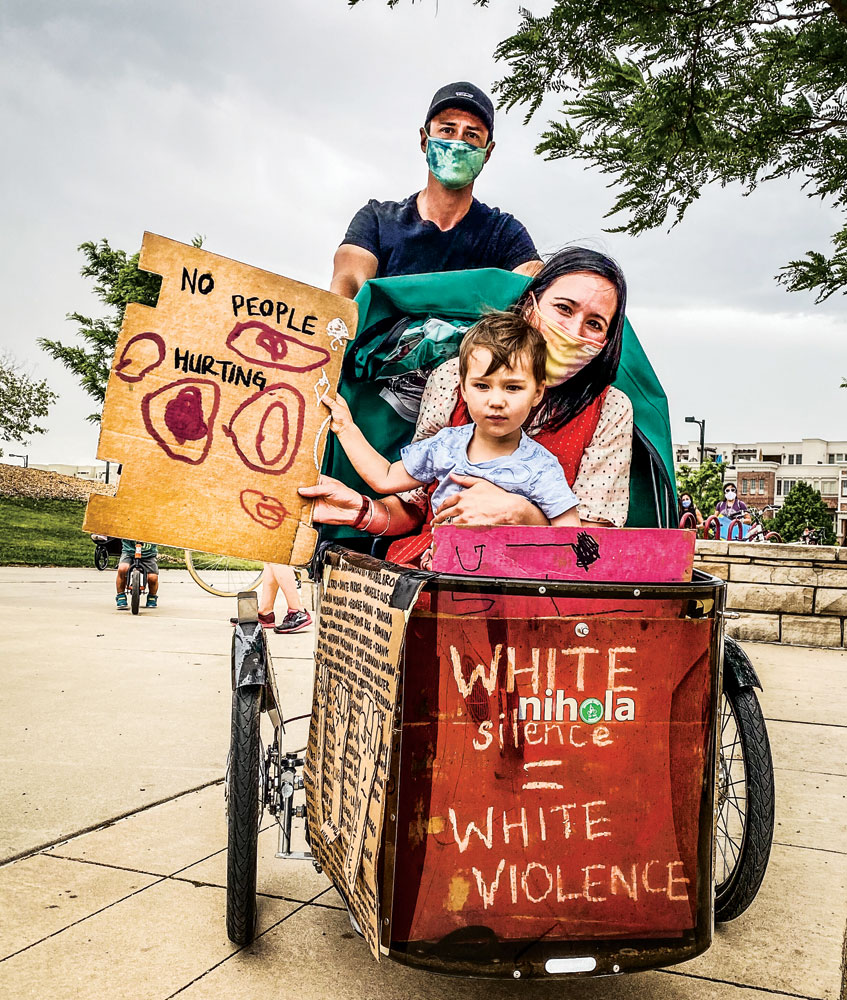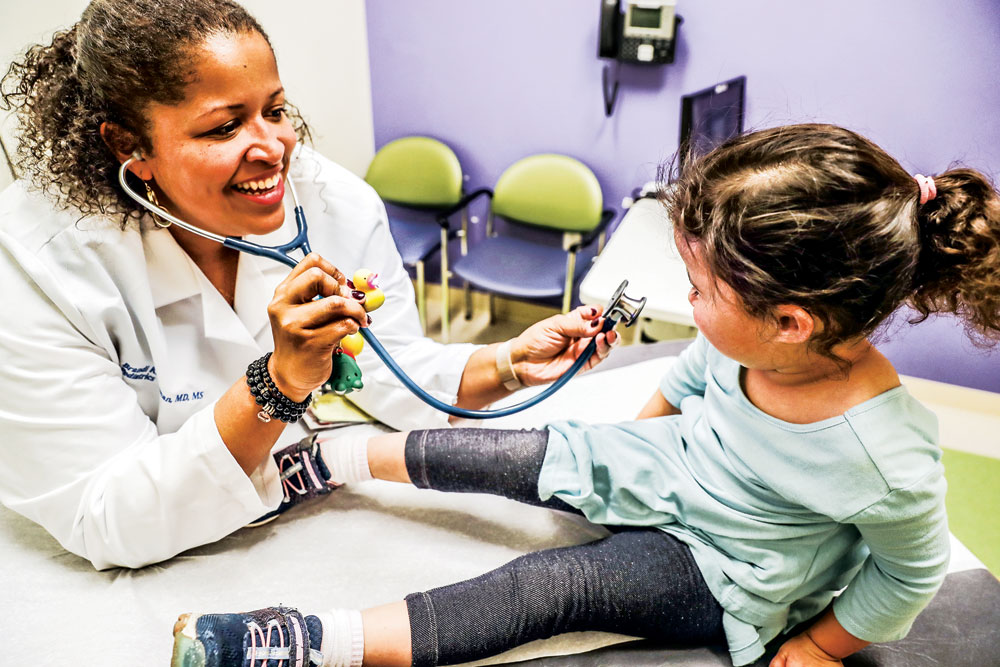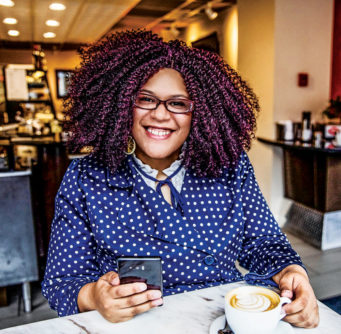
A young family at the June 6 march organized by Leah Peters. Front Porch photo by Christie Gosch.
Children are not colorblind. Even infants recognize differences we ascribe to race. Early in life, when children are acquiring language, they are also gaining an understanding of race and differences, says Children’s Hospital Colorado pediatrician and North End resident Dr. Brandi Freeman. Regan Byrd, who has been leading anti-oppression workshops in Denver for close to a decade concurs, saying, “Kids start categorizing and understanding races and relevant categories as early as age 3.” Given how early in life children perceive difference, how and when should parents talk to their children about race and racism? Is it ever too soon?

Children’s Hospital pediatrician Brandi Freeman reassures a child during an appointment. Photo by KUSA.
From their earliest years, children absorb both positive and negative messages from television, toys, books, and other experiences. Byrd and Freeman agree that by middle school, children have already formed their ideas about race, and conversations therefore need to begin much earlier. It is never too soon to talk to children about race, says Byrd; she suggests picking up on cues from children’s comments and reactions as they watch TV and observe everyday life. Ensuring that children have access to diverse images in the books and other media they consume will present more opportunities to talk about race, racism, and anti-racism. “You should be introducing racial diversity and racial complexity early in your child’s life,” Byrd says. “We can’t ignore the truth of our country,” says Freeman, and parents need to engage in age-appropriate conversations with children about what they are seeing and hearing.

Regan Byrd says parents can teach anti-racism by ensuring their children see diverse, non-stereotypical images in books and TV shows. Photo by Flor Blake Photography.
Byrd recommends initiating simple conversations when kids are young, such as: “We’re all human. People are connected. People have similar experiences; however, some people get treated differently because of their skin color, and we have to work against that.” Byrd says parents should use the pronoun “we” to describe things, rather than using “you.” “We as a family, we are anti-racist, and we work together to combat how racism affects other people.”
Freeman shares three recommendations to parents for talking to their children about race and racism:
1) “Make sure you are talking to your children at all levels; recognize that children have different levels of knowledge and make sure things are age-appropriate. It’s important to acknowledge that difference and bias exist.”
2) Parents need to examine and confront their own biases and model the behavior they want to see in their children.
3) Encourage children to challenge their own racial stereotypes. “Usually, kids are doing this through their friends and stereotypes they’ll see on television, but if they have personal experience with someone from a different background, it is a much more positive way to help them interact and understand that a stereotype is not a real representation.”
 Both Byrd and Freeman encourage parents and caregivers to be intentional about the media their children are consuming and to watch with their children so they can foster open conversations about the images and portrayals of different people. “Buy books that Black parents buy for their children. Buy books that give them a holistic sense of Black people and Black identity….Black parents already do this with their children. We as Black people are out looking for alternate, positive representations of Black people,” Byrd says. Freeman echoes the importance of positive images for kids; she recommends Common Sense Media, a website that reviews media content and offers recommendations for age-appropriate programming with diverse characters.
Both Byrd and Freeman encourage parents and caregivers to be intentional about the media their children are consuming and to watch with their children so they can foster open conversations about the images and portrayals of different people. “Buy books that Black parents buy for their children. Buy books that give them a holistic sense of Black people and Black identity….Black parents already do this with their children. We as Black people are out looking for alternate, positive representations of Black people,” Byrd says. Freeman echoes the importance of positive images for kids; she recommends Common Sense Media, a website that reviews media content and offers recommendations for age-appropriate programming with diverse characters.
“The mistake a lot of White parents make,” says Byrd, “is that they think this work doesn’t need to take place unless there are children of color; no, it needs to be done in general. I don’t care if you have an all-White school: they need to be reading books about Black people and Black people’s lived experiences. That’s how we learn to humanize and understand other people.” Even at a predominantly White school, Byrd stresses the need for children to learn about race and racism.
For additional resources, see the list at Children’s Hospital Colorado: www.childrenscolorado.org/racism. Regan Byrd offers individual consultations as well as group anti-oppression trainings, and a new session of her White Anti-Racist Allyship: Beyond the Basics workshop begins July 2. See https://www.reganbyrdconsulting.com/


0 Comments